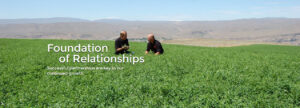What are Blister Beetles?
Blister beetles are a danger that may be lurking in your alfalfa hay. These beetles produce cantharidin, a toxic chemical that protects them from predation. Cantharidin from crushed beetle bodies causes burns after contact with skin. These lesions are easily treated and heal on their own. In contrast, ingestion of blister beetles can be fatal. Horses and other livestock accidently consume blister beetle bodies that are present in infected hay. Death may occur after consumption of only a few hundred beetles, but toxicity depends upon the species as well as gender. Signs of blister beetle poisoning in horses include blisters in the mouth, restlessness, abnormal vital signs, pawing, colic, frequent urination, and dehydration.

There are more than 300 species of blister beetles in the United States. They have long, narrow bodies (½ to 1 ½ inches). The broad head is fully exposed, wing lengths vary but are soft and flexible, and antennae are nearly 1/3 the length of their bodies. Blister beetles can be black, brown, gray, bright green, or turquoise in color, and may be striped or spotted.
Blister beetles are highly attracted to blooming alfalfa and other blooming weeds, such as dandelion. In addition, blister beetle larva feed on grasshopper eggs, so they are often associated with grasshopper outbreaks. Therefore, controlling weeds and grasshoppers, as well as harvesting before alfalfa blooms are some management techniques that can be used to minimize blister beetle infestation. Avoiding the use of conditioners or crimpers if beetles are present during harvest will help decrease blister beetle contamination of alfalfa hay. Since some species of blister beetles exhibit swarming behavior, the use of conditioners or crimpers will kill thousands of beetles in a small area. If a crimper isn’t used during harvest, the beetles may abandon the field before the hay is baled. Blister beetles can be controlled with pesticides, but these chemicals will also kill other beneficial insects.
At Anderson Hay we source hay from regions that are free from blister beetles, eliminating the dangers of our customers receiving contaminated alfalfa hay. Knowing your hay supplier is the best method to avoid feeding blister beetle-infected alfalfa hay. They can tell you whether there were concerns about beetle infestation during harvest and what precautions they employed to avoid the presence of blister beetles in hay. Because blister beetles are attracted to blooming weeds and alfalfa, purchase weed free, pre-bloom alfalfa hay. These recommendations will not guarantee blister beetle free hay; therefore, it is important to inspect alfalfa hay before feeding. If blister beetle bodies are observed, be sure to discard the hay.
For more information on our Quality Control visit our website. To receive this blog directly in your email, you can subscribe above to the right.


